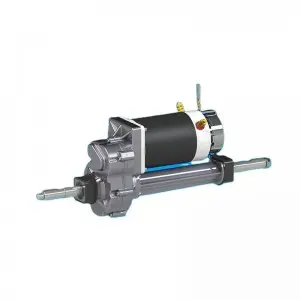When it comes to understanding how a vehicle works, the transaxle is an important component that many people often don’t know about. Equipped with complex mechanisms responsible for transmitting power to the wheels, the transaxle plays a vital role in the vehicle’s performance. But what exactly does a transaxle look like? In this blog, we delve into the details of this fascinating piece of automotive engineering and shed light on its appearance and function.
Explore what the transaxle looks like:
A transaxle can best be described as a combination transmission and axle. It combines the functions of these two components resulting in a compact and efficient design. The transaxle is usually located between the engine and the front or rear wheels, and its appearance may vary depending on the type of vehicle (front-wheel drive or rear-wheel drive).
Front Wheel Drive Transaxle:
In front-wheel drive vehicles, the transaxle is located in the engine compartment and is usually connected to the engine. It usually has a compact design and consists of various interconnected components. The transaxle of a front-wheel drive vehicle typically includes a gearbox, differential, drive shaft and constant velocity joints.
The gearbox houses the gears that transmit the power generated by the engine to the drive shaft. These gears allow the vehicle to change gears smoothly, resulting in efficient power transfer under varying driving conditions. The differential is an essential part of the transaxle, distributing power evenly between the front wheels, ensuring smooth and controlled steering.
Rear Wheel Drive Transaxle:
For rear-wheel drive vehicles, the transaxle is at the rear and is connected to the engine by a propshaft. This arrangement allows for better weight distribution and improved traction. In this configuration, the transaxle is often referred to as the “rear axle assembly”.
A rear-wheel drive transaxle consists of the rear axle housing, differential, drive shaft and rear wheel hub. The differential ensures power distribution to the rear wheels while allowing them to spin at different speeds when cornering. With its robust design and durable construction, rear-wheel drive transaxles can handle enormous amounts of torque and adapt to a variety of driving conditions.
The transaxle is a critical component that plays a key role in converting engine power into motion. Its look and design is tailored to the vehicle’s specific drivetrain layout, whether it’s front- or rear-wheel drive. Knowing what a transaxle looks like allows us to understand the intricacies of automotive engineering and further our understanding of how a vehicle operates.
Next time you drive, take a moment to learn about the silent operation of the transaxle to ensure a smooth, enjoyable drive. Its understated appearance belies its importance to the vehicle’s seamless operation. So, the next time someone asks, “What does a transaxle look like?” you’ll have the ability to enlighten them with your newfound knowledge.
Post time: Jul-31-2023


